Itinerary for the perfect weekend in Lisbon
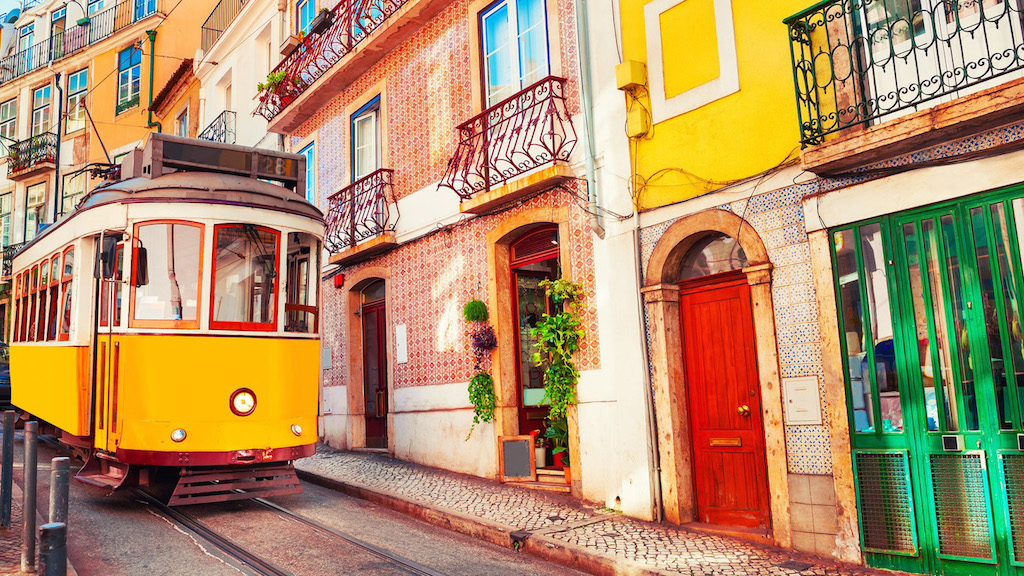
Many would argue that a weekend is not a long time to enjoy the best Lisbon has to offer. Between well-known touristic activities and unusual things to see and do, the capital of Portugal has virtually a never-ending array of things to keep discovering, even when you live here. But if two to three days is all you have, Lisbon can also be a great place for a delicious and fun-packed weekend break!
One of the best things about the sunny Portuguese capital is that it is perfect to visit all year long. Depending on your availability or the things you like the most, one could argue there is no such thing as the best time to visit Lisbon. No matter what time of the year you come to see us, don’t forget to read our practical tips and information you should know for your trip to Lisbon, which will help you plan an exciting and cost-effective stay.
Unlike other European capitals, Lisbon is not a city of must-sees, but it’s more the type of place you ought to live and feel. Of course this takes time, so if you’re only visiting us for two or three days, we have come up with an itinerary to help you make the most of your time in Lisbon, mixing things most visitors would find a shame to miss, along with hidden gems only locals generally know.
Whether you’re here from Friday to Sunday, or perhaps Saturday to Monday, these are the must-sees, must-dos and, as importantly, must-eats in Lisbon:
DAY 1
Get acquainted with Lisbon’s delights
Baixa-Chiado, Mouraria, Alfama, Graça, Bairro Alto
Day 1 in the morning
No matter where you choose to stay, we’d recommend leaving your bags, putting on a pair of comfortable shoes that will help you battle the (in)famous Portuguese cobblestone streets, and start your Lisbon adventure! Lisbon is best explored when walking. Feeling tired or jetlagged? We have a cure for that, in the shape of small cups of espresso coffee. Start getting familiarized with Lisbon in the downtown area, Baixa-Chiado, where you can begin recharging batteries at one of Lisbon’s historic cafés, such as A Brasileira (Rua Garrett 122), where the popular poet Fernando Pessoa is still sitting, in the form of a bronze statue. Impress your waiter ordering your coffee in Portuguese!
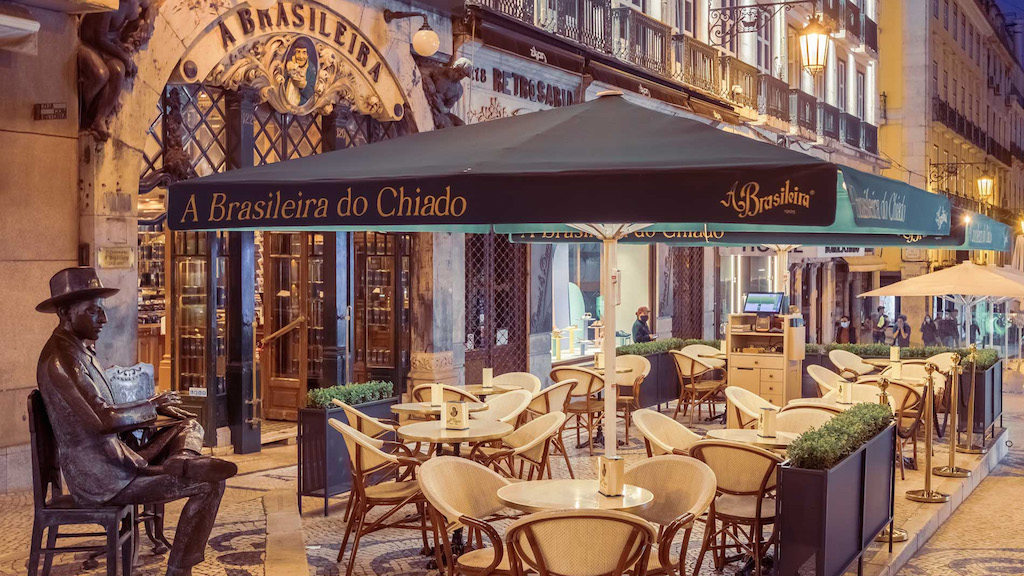
One of the things you should definitely do during your stay in Lisbon, particularly if it’s a short one, is eating at least one pastel de nata a day. There’s heated debate amongst local residents on where to find the very best Portuguese custard tarts so, if you’d like to participate in the talk of the town, you should take your research seriously sampling different options to compare and contrast. While in this area, head to Manteigaria (Rua do Loreto 2), which in recent years has gathered quite a reputation for their hot tarts with flaky and buttery puff pastry.

Roaming the streets of Baixa-Chiado will give you a very good overview of the city. Standing in Praça do Comércio looking towards the wide Tagus river, you’ll understand how the Portuguese have historically been very connected with the water and all the possibilities of exploration and expansion that the proximity to the sea brought to Lisboners.
Everything you see in downtown Lisbon is fairly recent, at least for Lisbon standards, as back in 1755 there was a massive earthquake followed by a tsunami that destroyed and swallowed everything built until then over the centuries. Walking below the Arch of Rua Augusta towards the city center is like walking into a new era of Lisbon, post-earthquake, presenting a style of architecture that is quite different than in the most ancient parts of our city. Here, the straight lines contrast with the small alleys and zig-zagged roads you’ll later see in Alfama and Mouraria, the oldest part of Lisbon. One of the most famous spots from where to appreciate the grid patterns of the downtown streets is the Santa Justa lift (Rua do Ouro). What was once upon a time a part of the public transportation system of the city, is now a tourist hot-spot. If you don’t feel like paying for a ticket or simply wait in line to go up, we recommend accessing it from the back, right next to Topo Chiado bar (Terraços do Carmo), where you’ll also get to enjoy pretty cool views. Once you’re here, don’t forget to check out Convento do Carmo (Largo do Carmo), a roofless convent that still shows signs of the destruction the 1755 earthquake brought to the city.
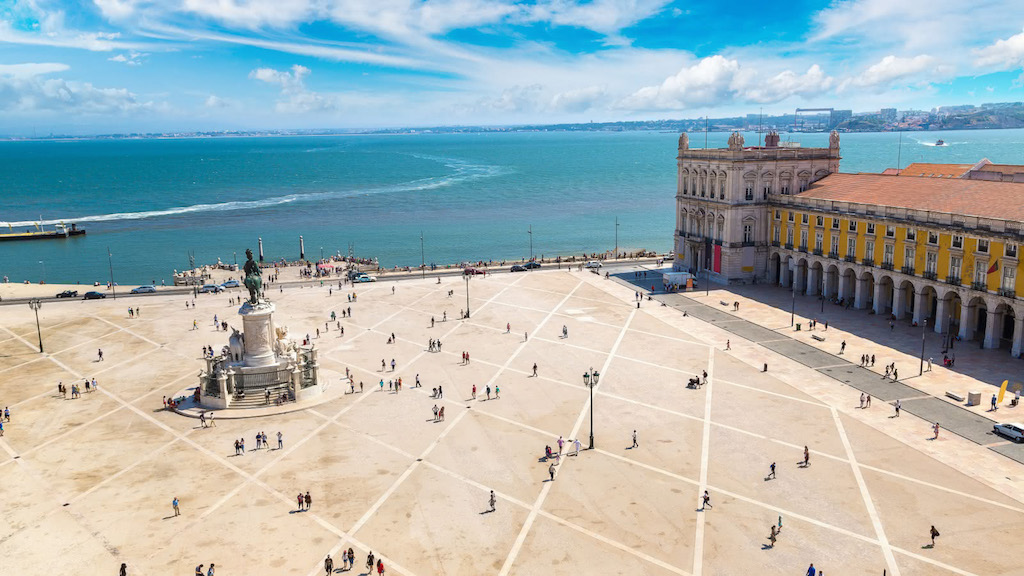
Come down walking past Rossio railway station (Rua 1º de Dezembro 125), which is beautiful during the day and even more so when warmly lit up at night. And, talking about warming up, this may just be the perfect time to drink a ginjinha. Around Rossio you’ll find several little bars exclusively dedicated to this traditional sour cherry liqueur, like Ginjinha Sem Rival (Rua das Portas de Santo Antão 7) which has been open since the 19h century, and which visitors and locals enjoy any time of the day. You don’t even have to sit down to sip the shot-sized portions. All you have to do is decide if you’ll take it straight or with a cherry inside your glass, but be advised that the fruit soaks up a lot of the alcohol!
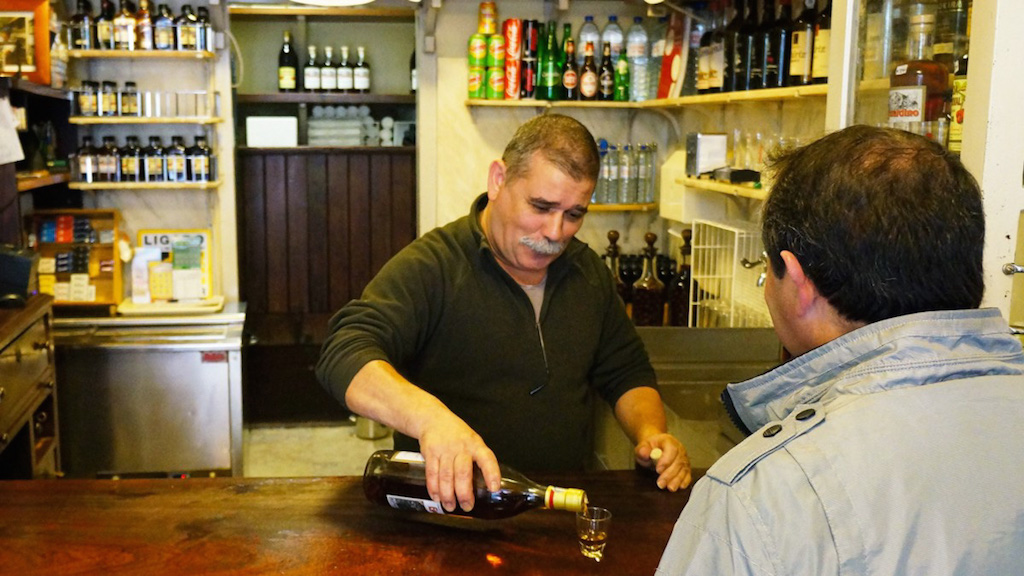
Day 1 in the afternoon
Because even foodies need to leave room for the main treat, on your first day in Lisbon, if you follow our next recommendation of joining a food and cultural walk, we’d suggest having a light lunch. If you’re in the mood for meat, grab a typical pork sandwich called bifana at hole-in-the-wall As Bifanas do Afonso (Rua da Madalena 146), or if the flavors from the sea inspire you most, dive deep into salted codfish paradise and order a sandes de patanisca, a sandwich stuffed with codfish fritters, at A Merendinha do Arco (Rua dos Sapateiros 230).
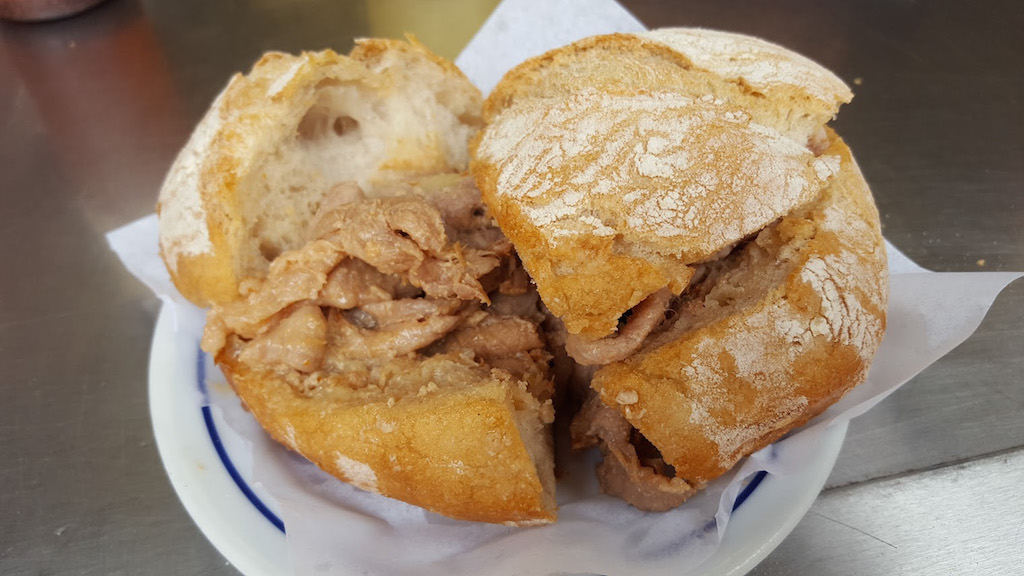
If you are to partake in a food and cultural tour while in Lisbon, we’d highly recommend doing so on your very first day in the city. This will give you a general overview of what Portuguese food culture is all about, introduce you to some of our most acclaimed dishes and, of course, you can pick your guide’s brain for further tips and recommendations for things to see, do and eat during the rest of your stay. At Taste of Lisboa we offer highly-curated gastronomic experiences, which you can join as part of a group or privately. Our Lisbon Roots, Food & Cultural Walk takes you from Rossio and around Mouraria. During this experience you’ll have the chance to explore one of the most multiculturally rich neighborhoods of Lisbon, try typical Portuguese petiscos, as well as some foods from former Portuguese colonies, that are now an intrinsic part of Lisbon’s food culture.

If after almost 4 hours of walking and eating you still have some energy and curiosity left, we recommend continuing exploring onwards towards Alfama. Enjoy the ambience at one of Lisbon’s oldest districts, see the Cathedral (Largo da Sé) that now stands where a mosque used to be back until the 11th century when the Portuguese Christian king conquered Lisbon back from the Moorish occupation. Head up towards São Jorge’s Castle (Rua de Santa Cruz do Castelo). Even if you don’t feel like going inside, the views and atmosphere around the area are very worth the climb.
Day 1 in the evening
For a much deserved break (and maybe a drink) choose a miradouro, one of Lisbon’s many viewpoints, and digest how much you’ve experienced on your first day in Lisbon. Alfama has several attractive miradouros, and so does the neighborhood of Graça – these are some of our favorite viewpoints in Lisbon for you to choose from!
You may think you won’t get hungry after spending the afternoon doing a food tour but keep in mind that walking up and down the city of the seven hills does burn a lot of calories, and the night is young…
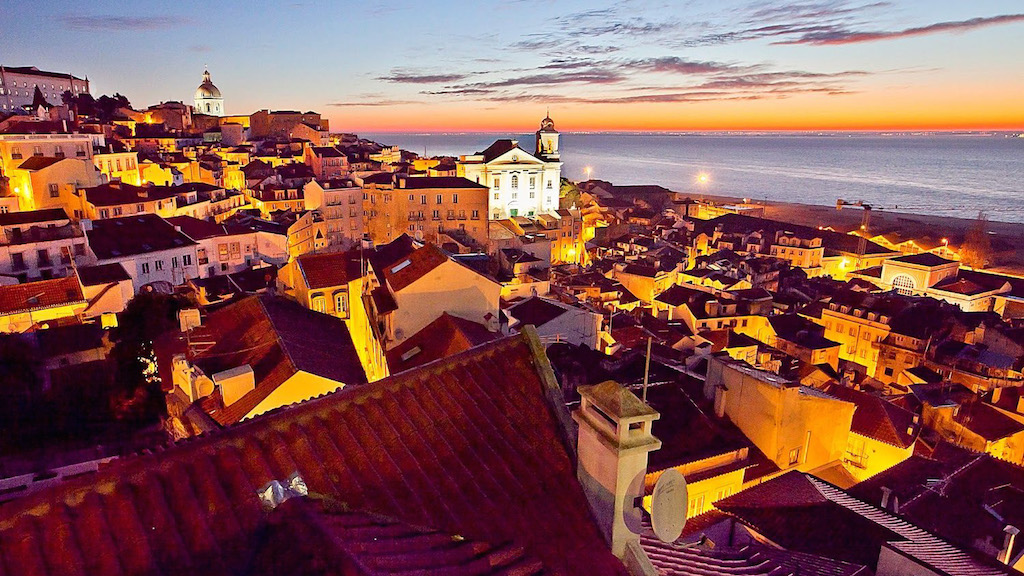
Day 1 at night
To put the cherry on top of the cake on your first day in Lisbon, we recommend heading towards a live fado performance. This nostalgic genre is Lisbon’s traditional music and you won’t be able to see a genuine fado performance in perhaps no other place in the world, so make the most of the opportunity while you’re here! If you’d like to stay in Alfama, we recommend going to Mesa de Frades (Rua dos Remédios 139). In Mouraria, A Severa (Rua das Gáveas 51) puts on a good show. But if you’d rather hop towards a slightly different side of the city to keep exploring, walk into A Tasca do Chico in Bairro Alto (Rua do Diário de Notícias 39). Here you’ll see a no-frills fado show, which is appreciated by tourists but also by many locals, who are well aware that fado celebrity surprise appearances are often in the cards at A Tasca do Chico. Grab a drink and enjoy the music (please note that the audience is asked to kindly keep quiet during the singing) but also munch on some traditional portuguese petiscos. Just like tapas in the neighboring country of Spain, petiscos are small servings of typical foods, ideal to share or as a snack.
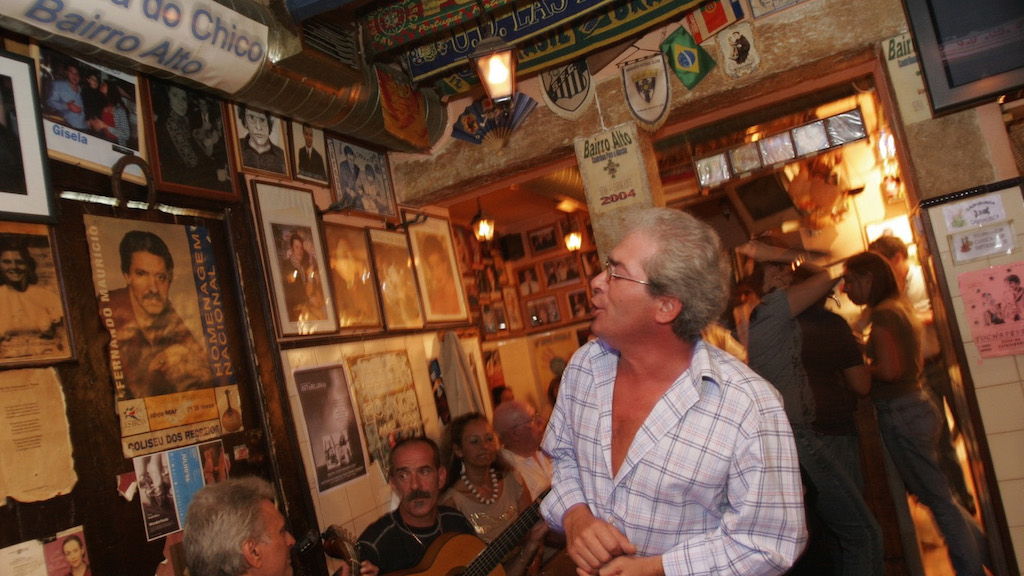
If you need to cheer up after the fado performance, Bairro Alto has plenty of opportunities to have you drinking and dancing until roughly 2AM. After that time, party people head down towards Pink Street (Rua Nova do Carvalho), where the bars are open for a couple more hours.
DAY 2
Live Lisbon like the locals
Belém, Alcântara, Santos, Cais do Sodré
Day 2 in the morning
If your accommodation doesn’t include breakfast, take this as the perfect opportunity to venture out on your own and grab breakfast like a Lisbon local would. Skip the scrambled eggs and bacon and energize yourself with a sweet pão de Deus with ham and cheese and a meia de leite, that is, Portugal’s take on a latte.
Head towards the district of Belém, abroad tram 15 from the city center. This historic neighborhood is the place to come to to reminisce about Portugal’s seafaring past. 16th century Belém Tower (Av. Brasília) allows us to mentally reenact how Portuguese explorers would embark from here towards their explorations across the seas.
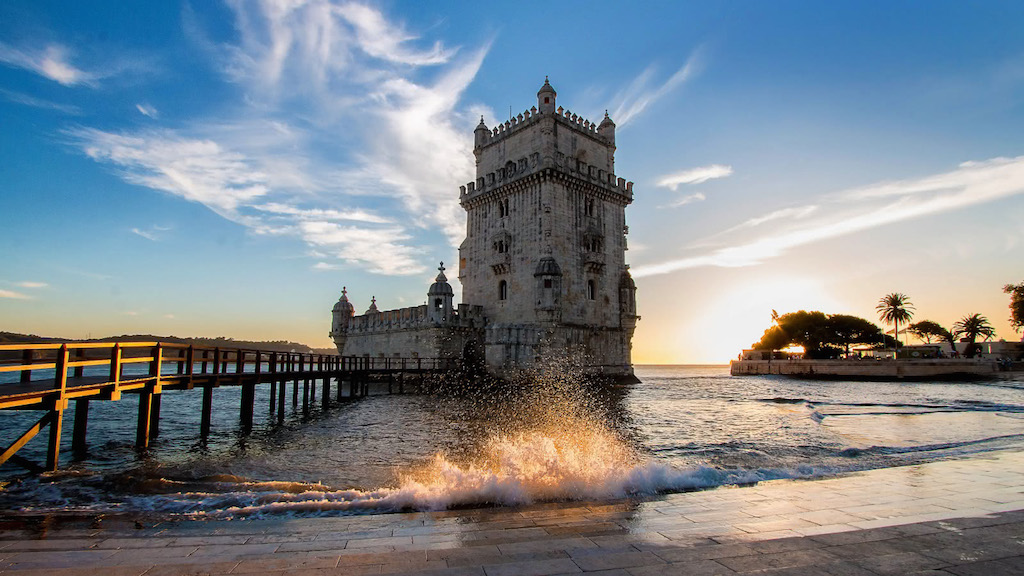
Just near this monument, and in contrast to its antiquity, you’ll find CCB, Belém’s Cultural Center (Praça do Império), which houses Coleção Berardo Museum, Portugal’s main museum for modern and contemporary art. The general tickets only cost €5 and it is actually free on Saturdays. So if you’d like to take the chance to see renowned works by the likes of Warhol, Picasso and other world class artists without spending a lot on admission, allow some time to immerse yourself in their art while visiting Belém.
Jerónimos Monastery (Praça do Império) dominates the views in Belém. This UNESCO World Heritage Site is a masterpiece of Portugueses architecture that dates back to the 16th century, and that showcases Manuelino style, a local architectural style inspired by the Portuguese sea voyages. Notice the decorative motifs featuring religious and nautical carvings on the stone.
If there’s one stop most people agree is compulsory around here, that is Pastéis de Belém (Rua de Belém 84 92), the place where the original Portuguese custard tarts were allegedly invented. A pastel de Belém is essentially the same thing as a pastel de nata, but here with a specific trademarked brand. So while a pastel de Belém is a pastel de nata, a pastel de nata may not be referred to as a pastel de Belém. Confused? Let your palate judge their similarities and potential differences!

Your last stop in Belém should be the Monument to the Discoveries (Av. Brasília), right by the waterfront. We find it fit to stand here, not only to admire the monument and the views towards the river, but mostly to enjoy the floor map of the world charting the routes taken by the Portuguese explorers. This work is beautiful and it can be a lot of fun to look at it while thinking about your very own next trip!
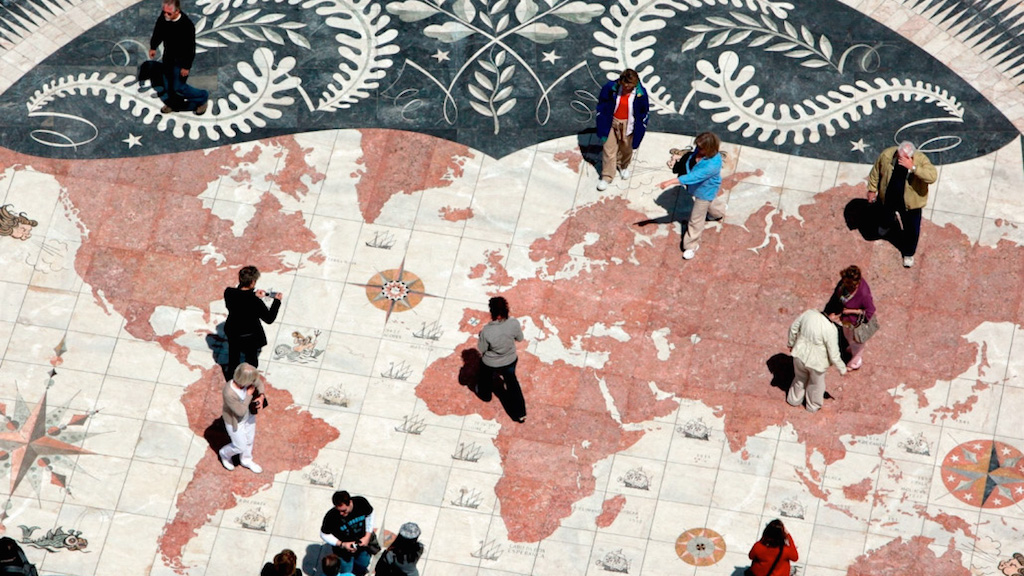
Day 2 in the afternoon
Once you’ve explored picturesque Belém, we’d propose heading back towards Lisbon’s city center. You have the option to take the tram back, but we’d highly encourage you to walk or pedal along the riverfront. This pleasant area has been developed for pedestrians and bicycles only. Pro tip: it’s OK to pack an extra pastel de Belém for the [small] trip!
There are 7km from Belém to Cais do Sodré which, unlike most parts of Lisbon, are flat and a joy to walk along! Yet we’d recommend making a stop about half-way through, in the areas of Santos and Alcântara. To enjoy lunch amongst locals and, quite possibly, no other tourists on site, go to Último Porto (Estação Marítima da Rocha Conde d’Obidos, Alcântara). This fish focused restaurant is so hidden from the usual route, that many residents in the area don’t even know it exists. But if you’re into simple recipes of grilled fish at fair prices, you’ll hardly find a better gem than this unassuming spot.

Nearby LX Factory (Rua Rodrigues de Faria 103) would be perfect for a digestive stroll. This former industrial area now turned into Lisbon’s hipster haven, offers unique retailers, restaurants, a couple of cafés and bars. If you happen to visit on a Sunday, a street market by the name of LX Rural will be taking place. You may not want to stock up on fresh produce while on holiday, but here you’ll have the opportunity to buy unique edible souvenirs from artisanal producers.
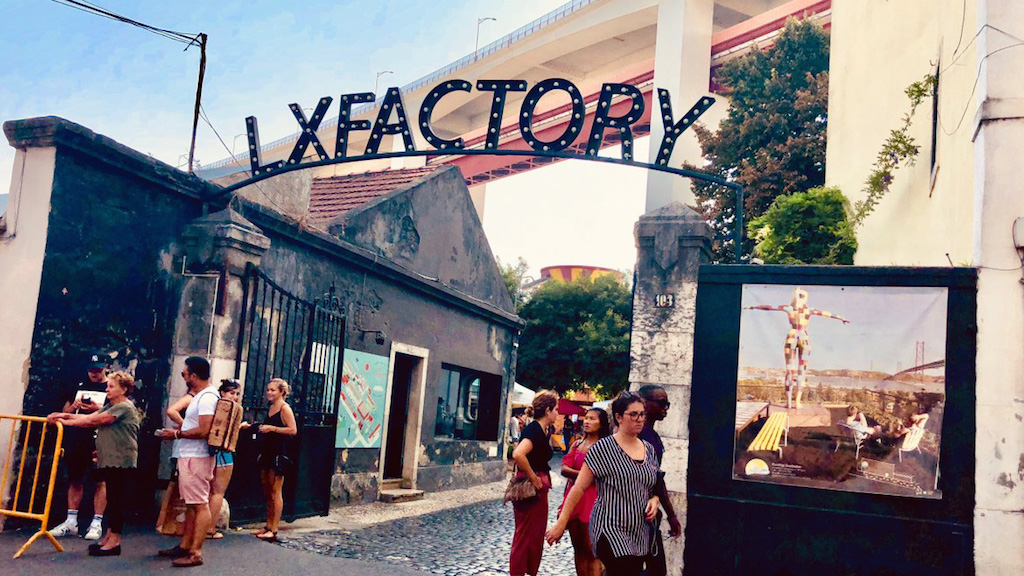
Day 2 in the evening
When dinner time comes around, there’s of course no shortage of options to feast on while in Lisbon. Our pick this time would go towards Cantinho do Avillez (Rua Duques de Bragança 7), to allow you the opportunity to sample what contemporary Portuguese food is all about. José Avillez is, no more no less, than Portugal’s most renowned chef. If your budget allows, dining at his Michelin starred Belcanto (Largo de São Carlos 10) is for sure a unique experience to have in Portugal. But, if you’re not ready to dish out about 65€ for a main, we recommend trying one of his more pocket friendly options instead. Cantinho do Avillez’s menu includes traditional Portuguese dishes with twists inspired by the chef’s travels around the world. The simplicity of Portuguese food is elevated by the chef and his team, but the essence of Portuguese cuisine isn’t diluted.
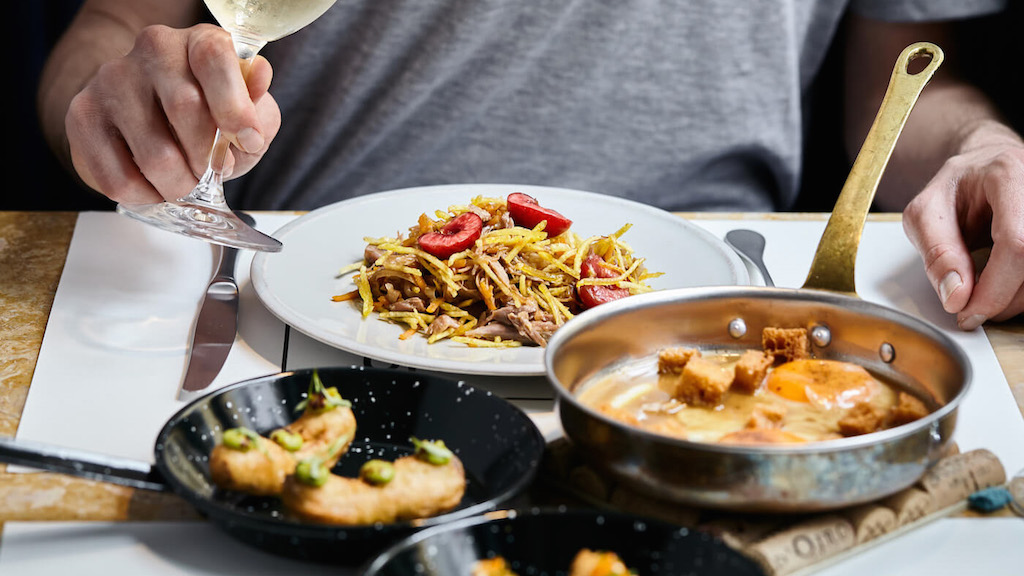
Day 2 at night
Because dining well has the potential to put you in a good mood, chances are you won’t be able to go to bed right after dinner. Enter: Red Frog Speakeasy! Consistently voted as one of the best cocktail bars in the world, Red Frog is quite the experience. You need to know where to head (Praça da Alegria 66b) and, once you reach, you ought to ring the bell for them to let you in. The secrecy doesn’t end at the main entrance, as there’s a fake wall once inside, that gives you access to an even more private room. The cocktail menu is, as you could have guessed, tempting, imaginative and simply put, delicious!

If the cocktails awaken the party animal in you, the town voices say LuxFrágil (Av. Infante D. Henrique a Sta Apolónia Cais da Pedra, Armazém A) is one of the best clubs to dance the night way. If you go there, explore the different floors to dance, but also head to the rooftop terrace to catch some fresh air and soak in the marvelous view over the river. You will miss this kind of sight when you leave – you have been warned!
DAY 3
Last but not least… the other side of the river!
Cacilhas, Almada, Estrela
Day 3 in the morning
Make the most of your last day in Lisbon and take a little bit of Portugal back home with you. Of course, there are many different types of souvenirs just like in any other city, but we’d highly recommend purchasing unique food souvenirs, which you can gift or simply take back home with you to sample when you start reminiscing about your trip to Lisbon. Buy some colorful cans of fish at Conserveira de Lisboa (Rua dos Bacalhoeiros 34); a bottle of Portuguese wine like Pico wine from the Azores, which you wouldn’t normally find in your country (Garrafeira Nacional – Rua de Santa Justa 18); or, why not, even some dried salted cod (at any of these stores) to recreate a traditional Portuguese bacalhau recipe in your own kitchen.
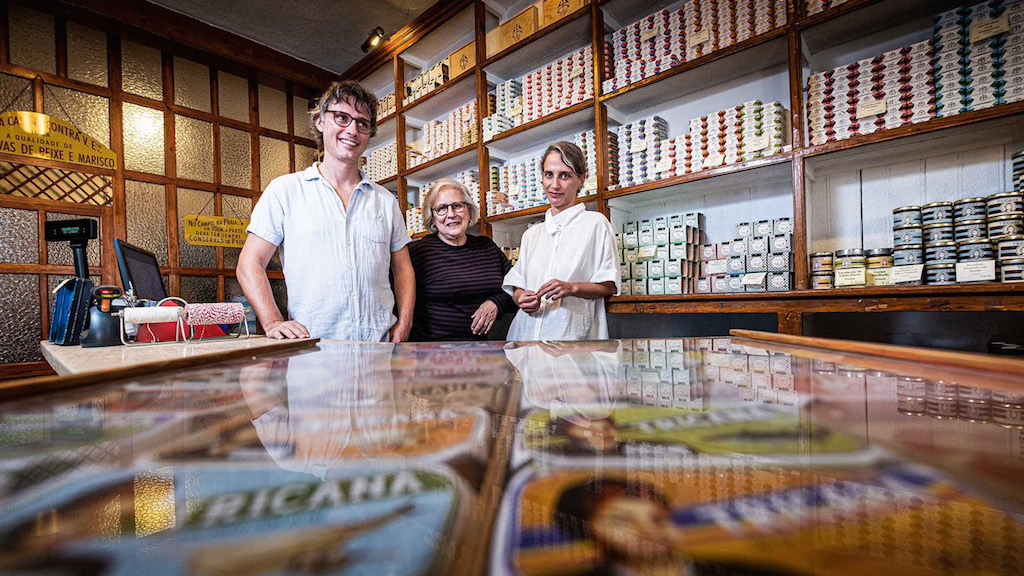
Day 3 in the afternoon
On your last day in Lisbon, you ought to say farewell to our city in style. To us, that means feasting on a typical lunch and, for that, we recommend paying a visit to Zé da Mouraria (Rua João do Outeiro 24). You’ll find plenty of salted cod dishes all around Portugal, but Zé da Mouraria’s roasted cod didn’t reach almost mythical status just like that! Thick slices of fish are here served in massive portions (and believe us when we say massive… we truly mean massive), with generous sides of potatoes and chickpeas heavily drenched in garlic-infused olive oil.

To help digest lunch, we suggest crossing the river to the south bank. Well, we wouldn’t recommend swimming across the Tejo, but instead taking a quick ferry, locally known as cacilheiro, from Cais do Sodré (green line on the metro) towards Cacilhas, in Almada. A quick 10-minute ride separates what sometimes feels like worlds apart. A lot of Lisbon locals hop to the other side to enjoy fresh seafood meals, usually at nicer prices than downtown. If you didn’t follow our lead for lunch, we wouldn’t bring you here just to eat but, instead, to take a leisurely walk by the riverside, while enjoying panoramic views of Lisbon.
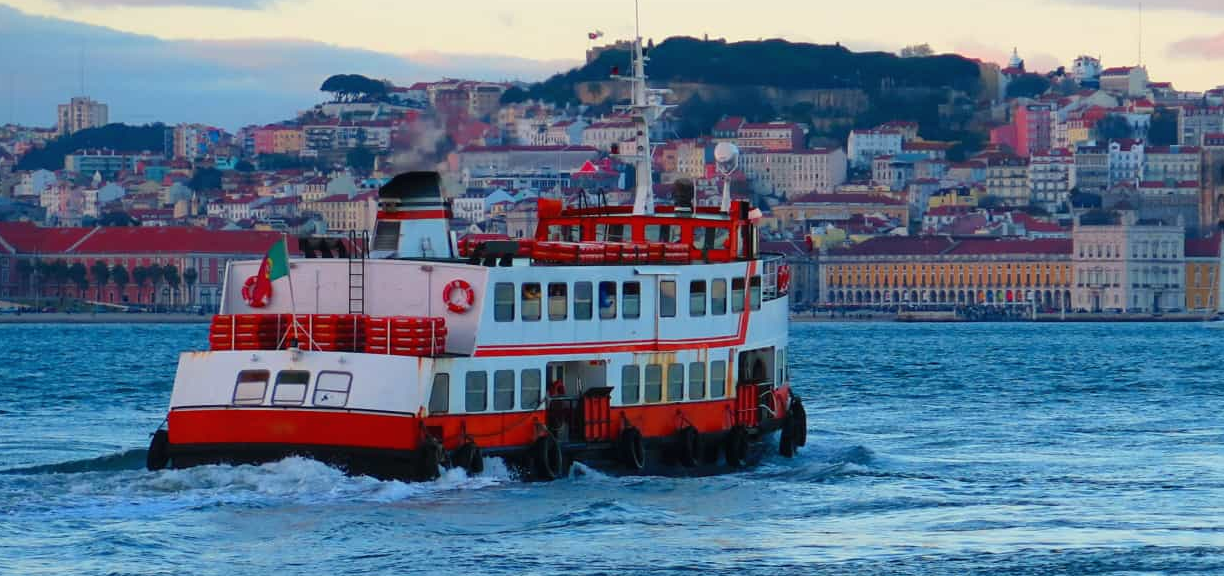
If you’d like to maximize the experience and perhaps click some of the best cityspace photos you can take around here, walk towards the statue of Cristo Rei, about 30 minutes from the ferry stop in Cacilhas. From the statue of Christ that was built to emulate the famous Christ in Rio de Janeiro, Brazil, marvel at the sight of Belém, the Golden-gate lookalike 25th of April bridge, and Lisbon’s city center, all the way to hilly Alfama.
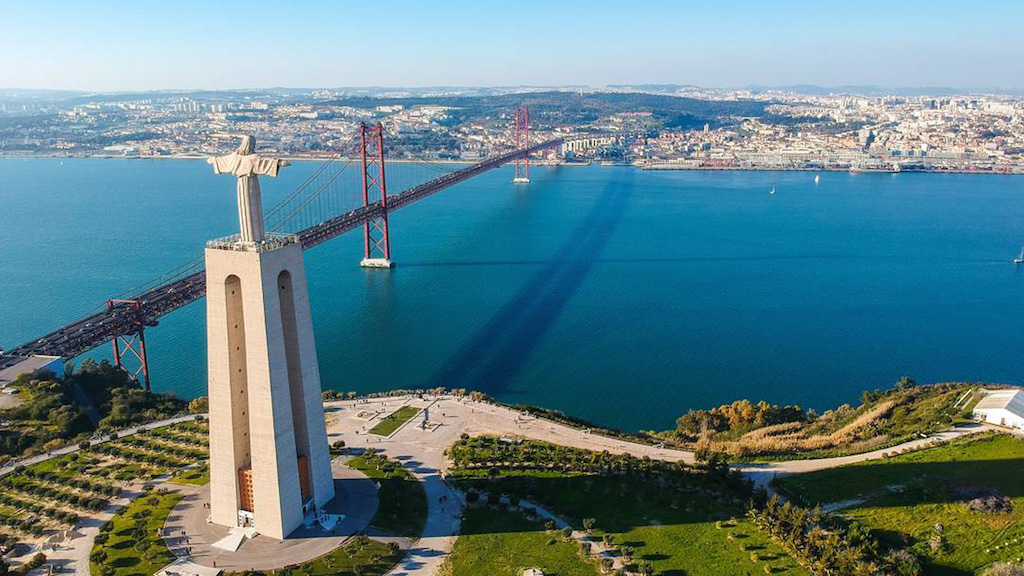
Day 3 in the evening
There’s no need to rush on your last hours in Lisbon. Make the most of the chilled vibes of our city and sit down for a drink and, if you can manage, a bite, still on the south bank of the Tejo river. Ponto Final (Rua do Ginjal 72, Almada) is renowned as a unique spot from where to enjoy incredible sunsets over the river with Lisbon on the horizon. But if this popular restaurant is full, you will easily come across other beer and seafood places that are very worth it in Cacilhas, closer to the ferry station (Largo Alfredo Dinis). During the summer months, the smell of sardines being grilled over charcoal will guide you like no map or reviews’ website ever could!
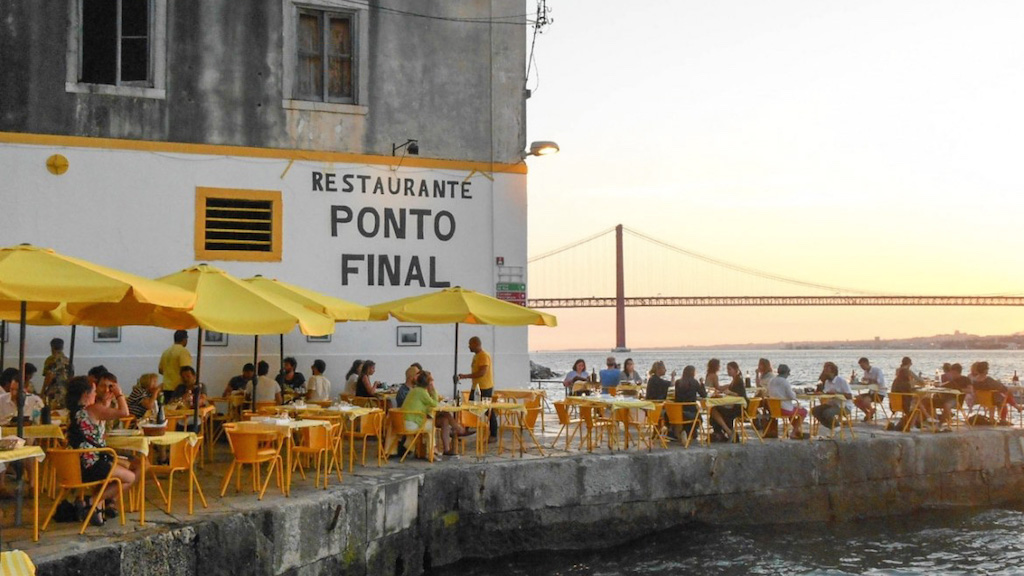
Day 3 at night
If upon returning to Lisbon you’re still in the mood for a nightcap, enjoy one last glass (or bottle) of wine at Senhor Uva (Rua de Santo Amaro 66A), one of Lisbon’s best wine bars. This cozy spot near Jardim da Estrela focuses on natural wines and vegetarian food. Started by a sommelier and botanical chef couple, Senhor Uva (Mister Grape, in Portuguese) serves a tapas style menu created with seasonal organic ingredients, matched with a truly impressive wine list.

As you can see, Lisbon has a lot to offer and, while we hope you could stay with us a little longer, we wish you very happy travels in our city! Do you have any questions about planning your upcoming trip to Portugal? Hit us up on Instagram or Facebook as we’d be happy to help! Please tags us @tasteoflisboa #tasteoflisboa
Feed your curiosity on Portuguese food culture:
When is the best time to visit Lisbon?
Most romantic spots in Lisbon for foodies
Day trips from Lisbon that we locals also enjoy
What to know before you arrive: tips and useful information for your trip to Lisbon
Real people, real food. Come with us to where the locals go.
Signup for our natively curated food & cultural experiences.
Follow us for more at Instagram, Twitter e Youtube
